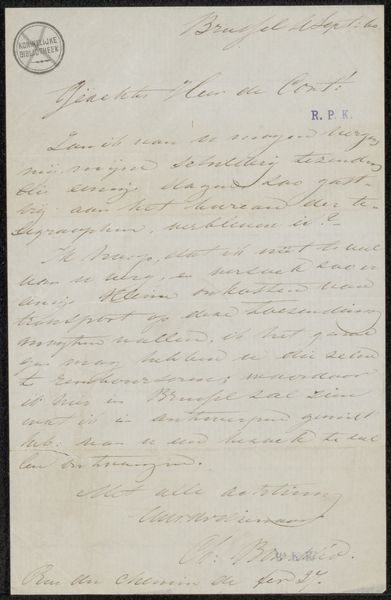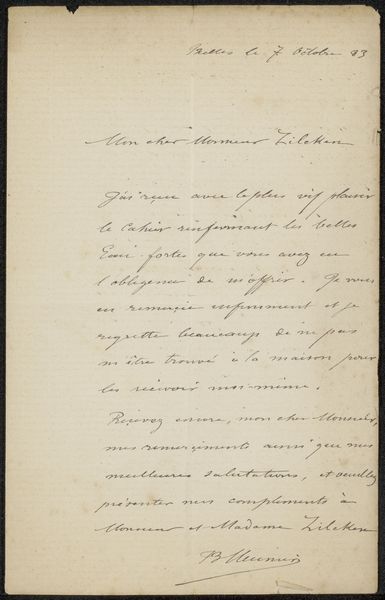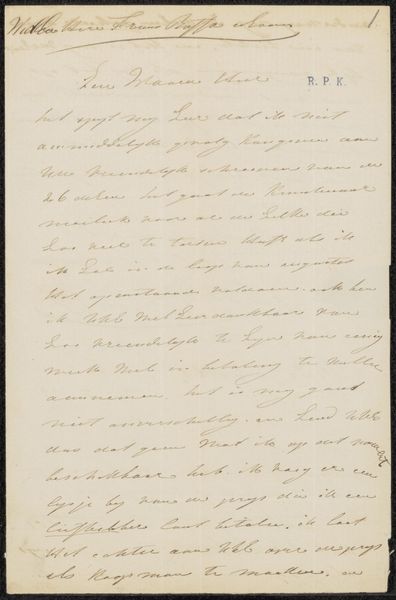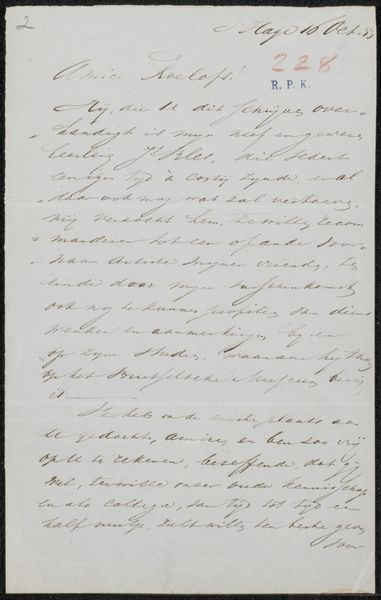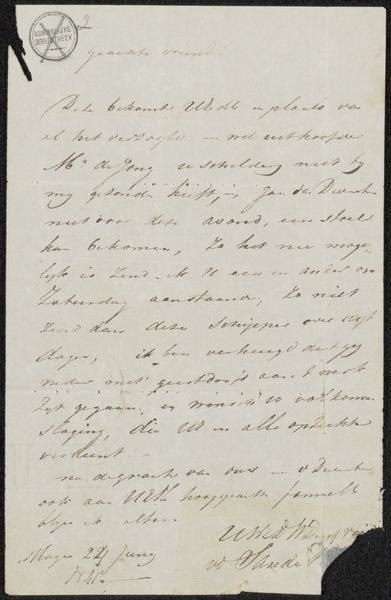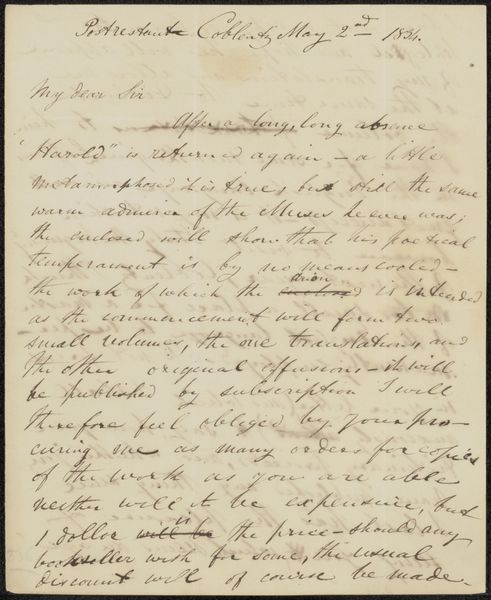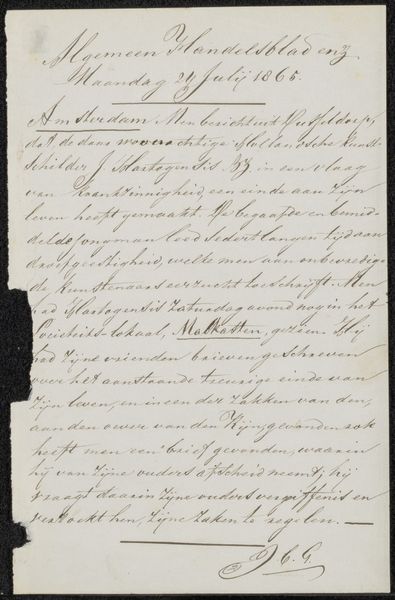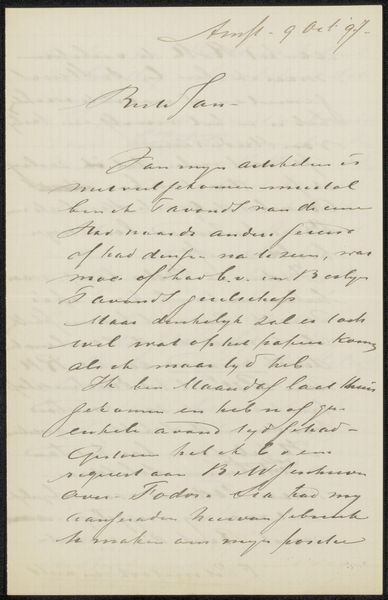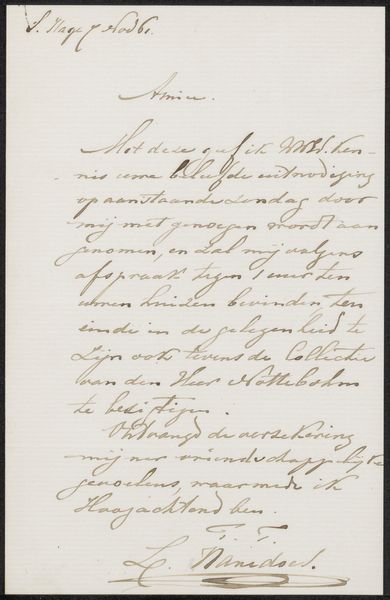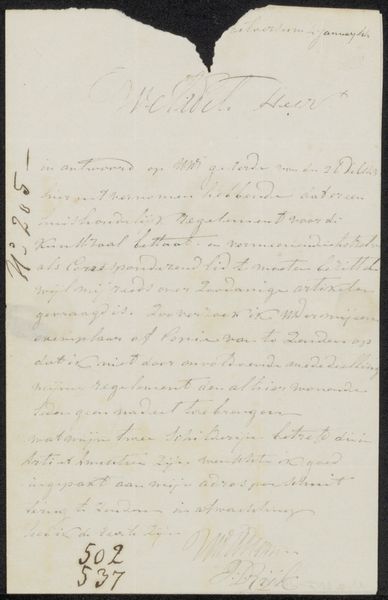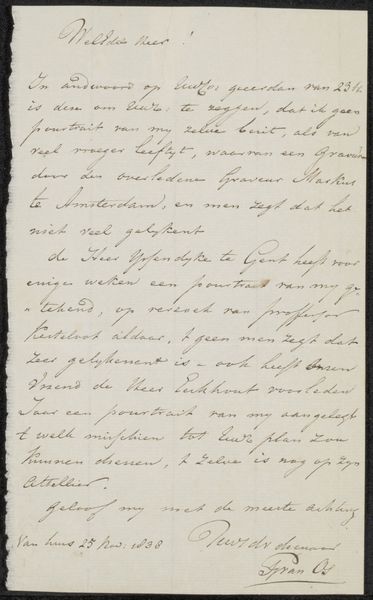
drawing, paper, ink
#
drawing
#
paper
#
ink
Copyright: Rijks Museum: Open Domain
Curator: This piece, attributed to Johannes Hermannus Molkenboer, is titled "Brief aan anoniem," or "Letter to Anonymous" and it likely dates to around 1823. It’s an ink drawing on paper. What are your immediate impressions? Editor: Hmm, my first impression is intrigue mixed with a strong sense of melancholy. I imagine it as a love letter from a sad, forgotten romance. See the faded ink and delicate, wavering script? There is some evidence the letter has been opened or torn. Makes you wonder about the intensity of what the sender was writing. Curator: That's a perceptive observation. This "Letter to Anonymous" likely has significant historical and cultural contexts. The fact that it's a letter points to the importance of written communication during the time, particularly for personal and perhaps clandestine exchanges. Think about literacy rates and how significant each piece of correspondence must have felt. Editor: And I'm also considering what the decision to stay nameless implies about either of those in this correspondence. The unknown recipient adds a mysterious dimension, inviting speculation about the relationship between the writer and this 'anonymous' addressee. Did something go sour between them or could the secret between them? Curator: Yes, the anonymous nature adds a layer of complexity to interpreting the work. Consider, too, how political climates, social expectations, and the rise of the bourgeoisie created new modes and spaces for secret communications like this in that period. Its presence suggests themes of forbidden relationships or potentially unsafe communications. Editor: Looking closer, it's amazing how much emotion Molkenboer has squeezed into these marks, although the subject itself makes a great contribution as well. I suppose it all does point toward the intense feelings embedded into our messages, especially into the history this kind of letter invites. Curator: Agreed. Examining these historical facets alongside its aesthetics and hidden contexts gives a fresh point of view of its significance in art history. Editor: Absolutely. It makes you realize how art connects with not only the society back then, but all societies who consider what remains unsaid.
Comments
No comments
Be the first to comment and join the conversation on the ultimate creative platform.
